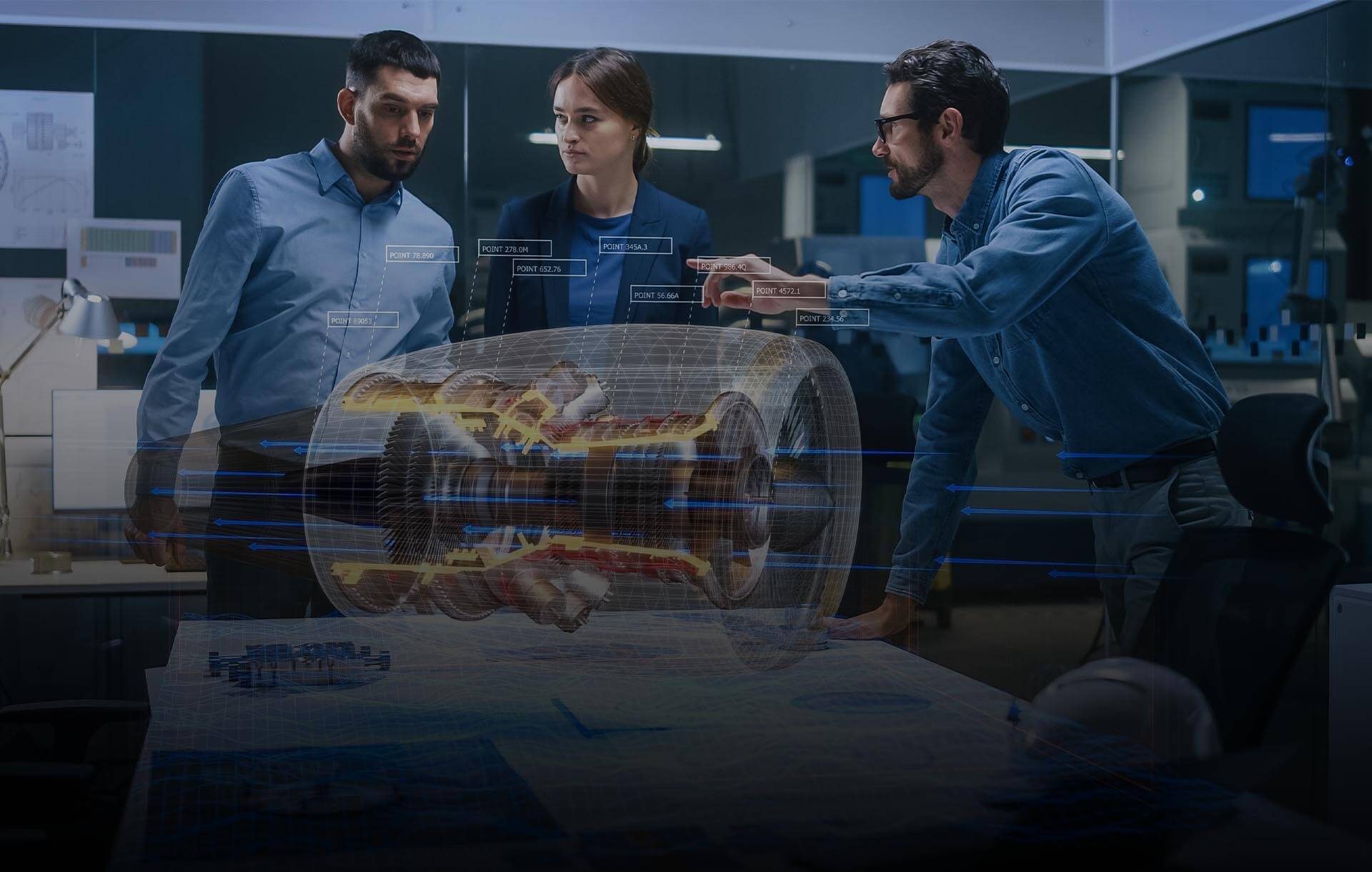This innovative technology finds application across various sectors, including aviation. By bridging the physical and digital worlds, digital twins allow for real-time monitoring, simulation and analysis of data, paving the way for unprecedented efficiency and innovation.

Reflecting the future of aviation with digital twins, AI and RPA
The concept of a digital twin has emerged lately as a revolutionary tool, enabling businesses to optimize operations, enhance product development and improve decision-making. A digital twin is essentially a virtual model of a physical object, process or system.
The concept of a digital twin has emerged lately as a revolutionary tool, enabling businesses to optimize operations, enhance product development and improve decision-making. A digital twin is essentially a virtual model of a physical object, process or system.
What is a digital twin?
A digital twin is a dynamic digital representation of a physical entity or system. It uses real-world data to create simulations that can predict how a product or process will perform. This technology enables companies to have a full digital footprint of their products, from design and development through to the end of the product lifecycle. Digital twins integrate IoT, AI, machine learning and software analytics with spatial network graphs to create living digital simulation models.
Applications
Maintenance
One of the primary applications of digital twins is in the maintenance and operation of assets. Industries such as aviation use digital twins to monitor the health of aircraft engines in real-time, predicting maintenance issues before they occur and optimizing fuel efficiency.
Development
In product development, digital twins offer a powerful tool for simulating how products will perform under various conditions. This capability allows for the refinement of designs with greater accuracy, reducing time and cost in the development phase.
Training
Digital twins also find application in training, where they provide a realistic and risk-free environment for training personnel. This is particularly useful in high-stakes industries like aviation, where hands-on experience with real-world scenarios is invaluable.
Sustainability
By optimizing operations and maintenance, digital twins contribute to sustainability by reducing waste, energy consumption and emissions. This aligns with the global push towards more sustainable business practices across industries.
Integrating AI and Robotic Process Automation (RPA)
The combination of digital twins with AI and RPA unlocks even greater potential. AI algorithms can analyze data from digital twins to predict outcomes more accurately, automate decision-making processes and identify optimization opportunities. RPA, on the other hand, can automate repetitive tasks based on the insights derived from digital twins, increasing efficiency and reducing human error.
For instance, in manufacturing, AI can analyze data from the digital twin of a production line to forecast machine failures or bottlenecks and suggest adjustments. RPA can then automatically implement these adjustments, ensuring the production line operates at optimal efficiency.
Let’s see some example…
AI takes a deep dive into the data from a digital twin of a jet engine. It’s looking for any signs that something’s not right. If it spots something, it doesn’t just raise a flag – it can predict when it might actually become a problem. Then, RPA steps in – it automatically schedules maintenance or orders the parts needed, making sure everything’s fixed before it becomes a bigger issue. This keeps the planes flying safely without unnecessary downtime.
This isn’t just about fixing problems before they happen, though. AI can also look at how the plane’s flown and find ways to make it more fuel-efficient, which saves money and is better for the planet. Meanwhile, RPA can handle the paperwork and logistics, making sure these changes are made smoothly.
The future with digital twins
As we continue to witness the growth and refinement of digital twin technology, its fusion with AI and RPA is set to redefine the boundaries of what’s possible, ushering in an era of systems that not only think for themselves but also improve on their own. This is not just about enhancing what we already do – it’s about reimagining how we do everything. With digital twins, AI and RPA working together, we’re poised to leap into a future where efficiency, intelligence and sustainability are goals. The journey of digital twins is a vivid illustration of how technology can transform our world, promising a future where digital and physical realms merge in ways we’re only beginning to understand. As this technology matures, we stand on the brink of a revolution that could redefine industry, and indeed society, for generations to come.
But it’s not only about aviation…
I guess you love the aviation industry and you are an experienced professional in this field. But digital twins technology is not confined to any particular sector.
Just as a digital twin can simulate and optimize the flight path of an airliner, so too can it transform the way we interact with the world around us. What about virtual vineyards that forecast the perfect vintage, digital replicas of pets enriching our understanding and care for our furry companions or even virtual planets that offer a gateway to the cosmos from our living room? The leap from aviation to these novel applications might seem vast, but the underlying principles of simulation, analysis and optimization remain strikingly consistent.
So, even if the roar of engines and the vast blue yonder will always be your first love, the journey with digital twins doesn’t end at the runway. It’s just taking off, leading to horizons as yet unimagined and adventures as exciting as the first manned flight. Let your curiosity soar, and be surprised by where else your passion for aviation and expertise in digital twins can take you.
Author: Zuzanna Demska-Buszkiewicz, AI Business Lab
